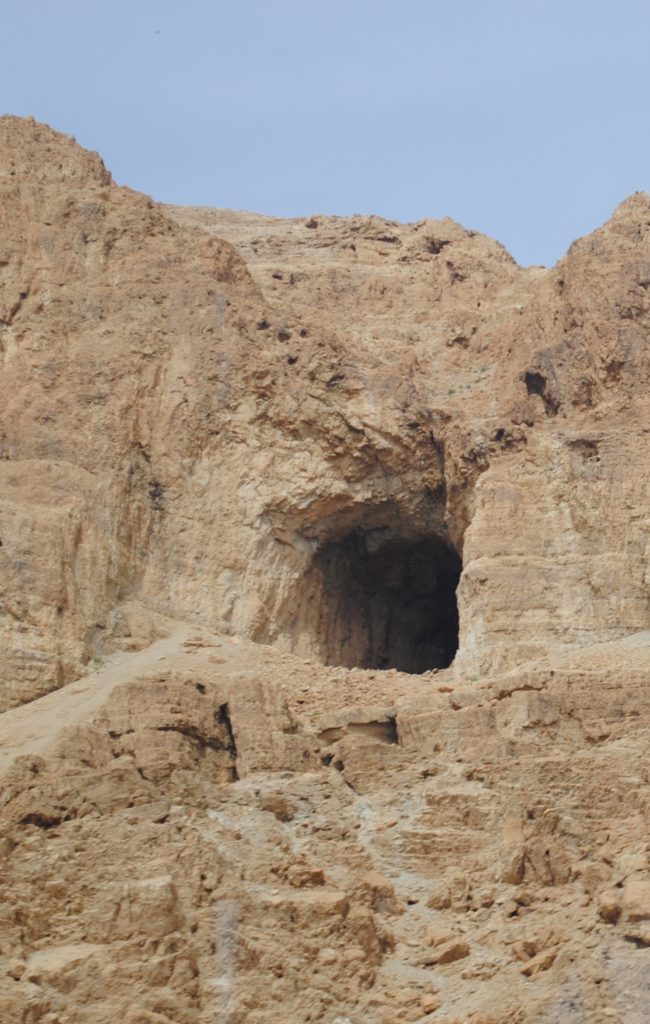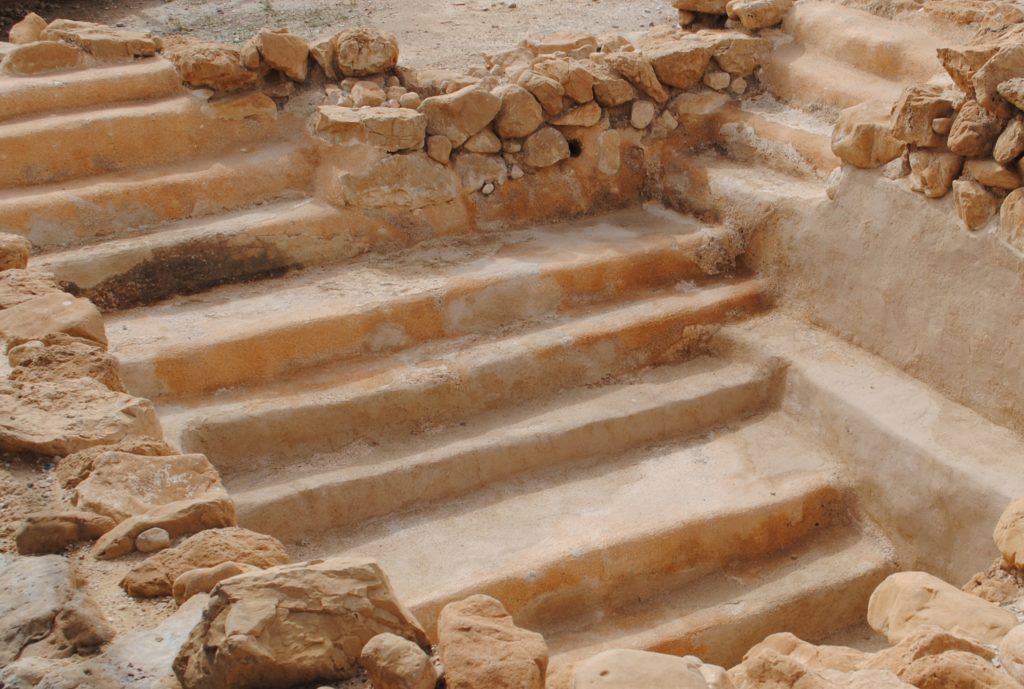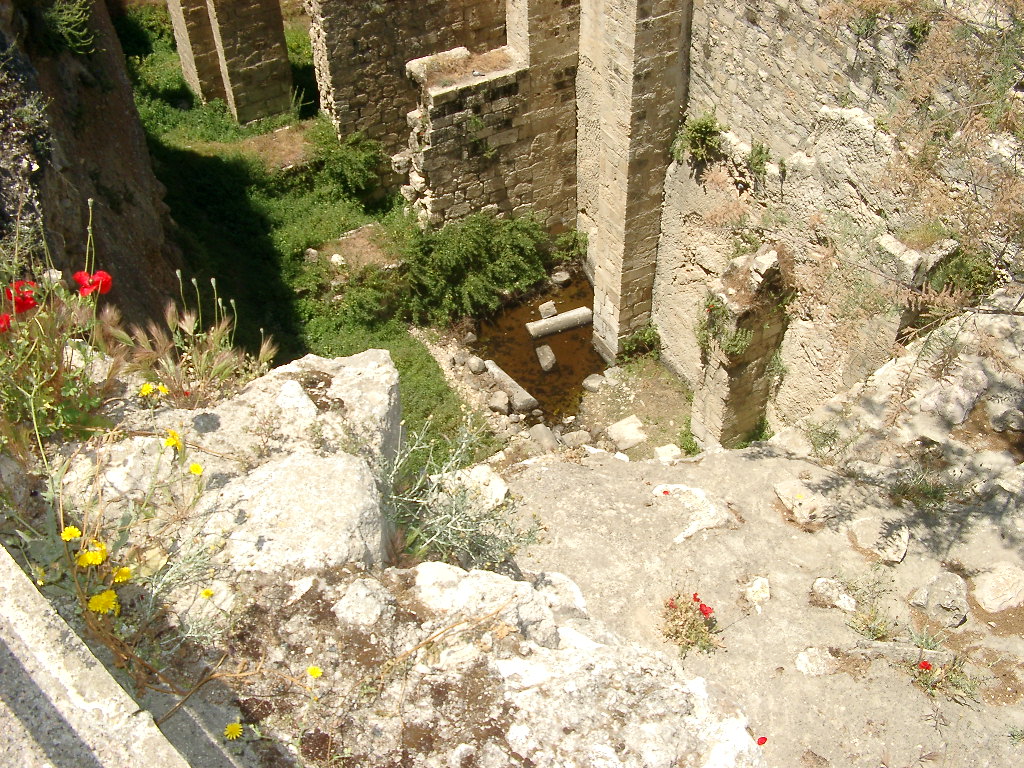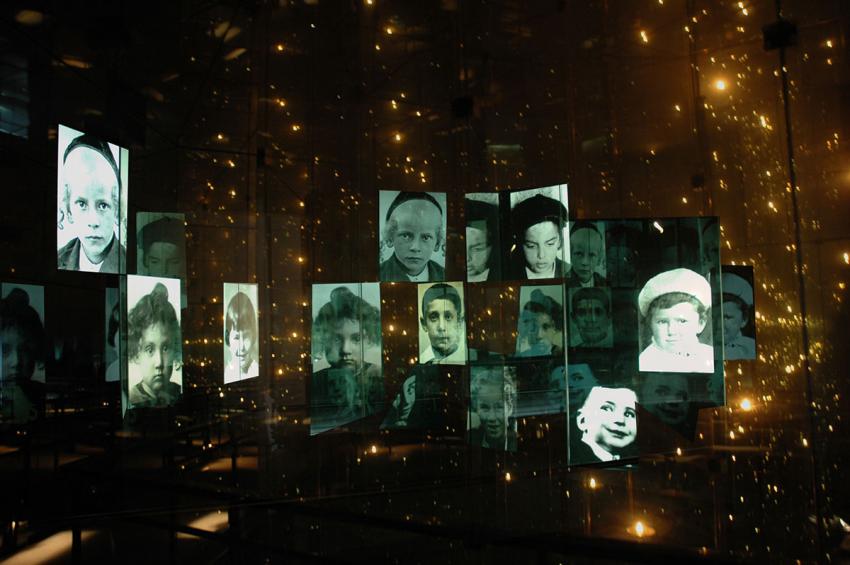In my post on November 12th, I showed you the Yad Vashem pin I purchased and I promised to write more about the holocaust this month. January 27th is International Holocaust Remembrance Day. This day has several names, all meaning the same thing. Yad Vashem is the Holocaust Museum in Jerusalem, Israel.
The Children’s Memorial is a small building on the Yad Vashem Campus.
Cut into the outside wall is a sculpture of an adult surrounded by several children. This man was a Christian teacher of several Jewish children. When the soldiers came to take the children he refused to let them go. He was told if he didn’t let them go, he would die. He went with the children and died with them in a concentration camp.
As I entered the building there were signs saying to keep hold of the railing, keep walking, and do not stop.
A few steps later I was in a dark room. There are no pictures in the room as shown in this picture,
There was a single candle in the middle of the room and, I think, hundreds of small mirrors. The mirrors reflected the one candle and they reflect the lights of other mirrors.
The reflected lights symbolize all the future generations who never lived due to the death of one child.
As I walked along the path through the memorial (about 60 feet), I hear the name, age, and hometown of one child killed in the Holocaust. There is an estimated 1.5 million children who died during WWII.
One of the people in my group did some calculations. It would take over seven years before the names would start being repeated.
Many, many of the people coming out of the memorial, including myself, are wiping tears from their eyes. I have tears now as I remember that memorial.







